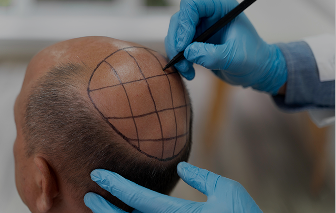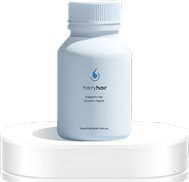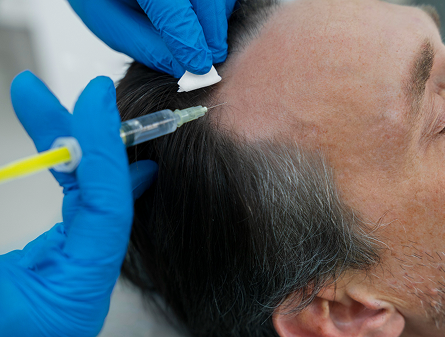Pulsed Electromagnetic Field (PEMF) therapy utilises low-frequency electromagnetic fields to encourage healing in tissues. PEMF can prolong the growth phase of the hair growth cycle to prevent hair shedding. A hair transplant is a surgical procedure where healthy hair is extracted from a donor area and implanted into the recipient or balding site.
The transplanted grafts start to produce new hair after 3-4 months and can be a long-term treatment option. PEMF therapy is not invasive and does not have any reported side effects.
A hair transplant is an invasive treatment option that requires a commitment not only for the procedure but also for pre-surgery and post-surgery care. Check out the comparison table below to see if a hair transplant or PEMF therapy is a better fit for you.
- PEMF uses low-frequency electromagnetic fields to stimulate scalp tissue and improve circulation.
- PEMF is non-invasive, suitable for home use, and involves no surgery.
- It is best for early to moderate thinning.
- PEMF has minimal side effects and no downtime.
- Requires consistency for results.
- Hair transplant involves surgically relocating follicles from a donor area to thinning or bald areas.
- Ideal for advanced hair loss and areas with no regrowth.
- Hair transplant delivers permanent results in one or two sessions.
- Requires downtime and recovery.
- Performed in clinics by specialists.
- PEMF devices require a higher upfront purchase but offer ongoing use without additional costs.
- Compared to hair transplants, PEMF can be significantly more affordable overall for suitable candidates.
- Hair transplants involve substantial upfront costs due to surgical fees and clinic time.
- In contrast to PEMF, the expense is higher, though often justified by the permanent nature of results.
- PEMF sessions are typically 15–30 minutes and are done several times weekly.
- Unlike a transplant, there’s no recovery period, but consistent use is required over months to sustain progress.
- Hair transplant surgery takes 4–8 hours in one session, with several days of downtime.
- Compared to PEMF, results take longer to appear, though fewer sessions are needed overall.
- PEMF delivers electromagnetic waves to the scalp to enhance cellular energy and blood flow.
- Unlike transplants, it doesn’t involve surgery or physical follicle relocation.
- Hair transplant physically moves hair follicles from dense areas to bald patches.
- Compared to PEMF, this method offers immediate coverage but is significantly more invasive.
- PEMF is considered highly safe with no significant side effects.
- Compared to transplants, it poses no risk of infection, scarring, or anaesthesia-related complications.
- Hair transplants are generally safe but involve surgical risks, including infection, swelling, and scarring.
- Compared to PEMF, post-op care is essential to ensure proper healing.
- PEMF can be used at home and incorporated into daily routines with minimal effort.
- Unlike hair transplants, there’s no disruption to normal activities or work schedules.
- Hair transplants require planning, time off work, and recovery.
- Compared to PEMF, the ease of use is lower, though the process is completed in fewer sessions overall.
- PEMF devices are available online and through specialty providers, but may be cost-prohibitive initially.
- Compared to transplants, they are more widely accessible and don’t require clinical settings.
- Hair transplants are limited to specialist clinics, often in urban areas.
- Unlike PEMF, not all individuals are eligible, and access may be limited by geography or donor hair availability.
- PEMF offers long-term improvement if sessions continue, but effects may fade when usage stops.
- In contrast to transplants, sustainability depends on adherence a
- Hair transplants deliver permanent results in treated areas.
- Compared to PEMF, the outcome is more durable, though thinning may continue in untreated zones.
- PEMF works well with topical treatments, supplements, and post-transplant care.
- Unlike transplants alone, it supports scalp health and may enhance outcomes when combined with other modalities.
- Hair transplants can be paired with PEMF to support graft survival and promote healing.
- Compared to standalone transplants, combined approaches often yield better density and recovery.
- PEMF suits patients who prefer gentle, non-invasive therapy with gradual progress.
- Compared to hair transplants, it appeals to those wary of surgery or looking for a non-invasive improvement.
- Hair transplants appeal to users seeking a transformative change after significant hair loss.
- Unlike PEMF, the one-time intervention offers a visible confidence boost with comparatively fast cosmetic impact.
- PEMF promotes scalp healing, reduces inflammation, and improves blood circulation, supporting hair health.
- Compared to transplants, it works holistically without altering follicle location.
- Hair transplants restore density in bald areas but don’t enhance follicle health or reduce inflammation.
- Unlike PEMF, they serve a structural purpose rather than supporting overall scalp wellness.
- PEMF produces minimal waste after device purchase and operates electrically.
- Compared to surgical procedures, it’s more sustainable over long-term use.
- Hair transplants generate medical waste from surgical tools, dressings, and clinical energy use.
- Unlike PEMF, they involve higher resource use on the treatment day but require fewer sessions overall.
Shop our hair solutions
We are committed to providing affordable hair regeneration services for people all over Australia. Our formula can help you regain your confidence.
Shop Now

Comparison Summary
PEMF therapy may be suitable for providing short-term results. It is best employed to prevent further hair loss with studies showing it to be particularly effective at preventing chemotherapy-related hair loss.
A hair transplant will work better as a long-term solution. While it is not a permanent treatment, the results can provide long-lasting growth that will age naturally alongside your healthy hair. PEMF therapy can be performed at home or in a clinic.
When looking at PEMF vs hair transplant costs, the devices are still being researched meaning more competitors in the PEMF for hair loss space are required to lower prices. A hair transplant is a more expensive treatment option up front.
This can be a worthwhile investment in the long run but there are more risks involved which means research is crucial to ensuring the best results. PEMF treatments need to be performed regularly to upkeep results whereas a hair transplant is typically a once-off procedure but it requires care before and after the surgery for optimal hair growth.
User Guidance
PEMF treatments will be less intrusive to your daily routine compared to hair transplants. PEMF therapy may suit you better if you are just looking to prevent hair thinning and shedding, especially if using an at-home device.
Hair transplants can provide patients with long-lasting results and are suitable if your hair loss has stabilised. PEMF treatments, when used on their own, do not come with any adverse side effects so can be appealing to those looking for a non-invasive treatment option.
PEMF treatments will require regular upkeep sessions while a hair transplant is usually performed just once and then results can be enjoyed.
Take Our Hair Loss Quiz to See Which Treatment Suits You?
Take A Hair Quiz

Frequently Asked Questions
We have put some commonly asked questions.
Nunc scelerisque tincidunt elit. Vestibulum non mi ipsum. Cras pretium suscipit tellus sit amet aliquet. Vestibulum maximus lacinia massa nontor.
Platelet-rich plasma (PRP) treatment involves drawing blood from the patient, isolating the beneficial nutrients and injecting it into the scalp where hair loss is occurring. This promotes hair growth and has many other applications from encouraging healing to skin rejuvenation.
Platelet-rich plasma (PRP) treatment involves drawing blood from the patient, isolating the beneficial nutrients and injecting it into the scalp where hair loss is occurring. This promotes hair growth and has many other applications from encouraging healing to skin rejuvenation.
Platelet-rich plasma (PRP) treatment involves drawing blood from the patient, isolating the beneficial nutrients and injecting it into the scalp where hair loss is occurring. This promotes hair growth and has many other applications from encouraging healing to skin rejuvenation.







 See All
See All